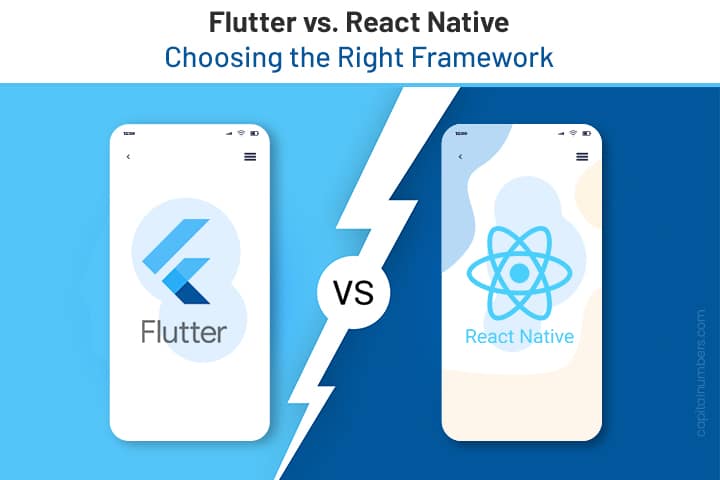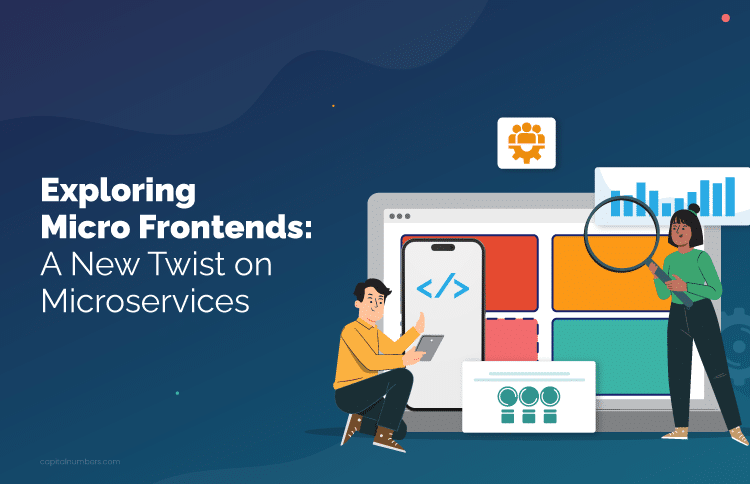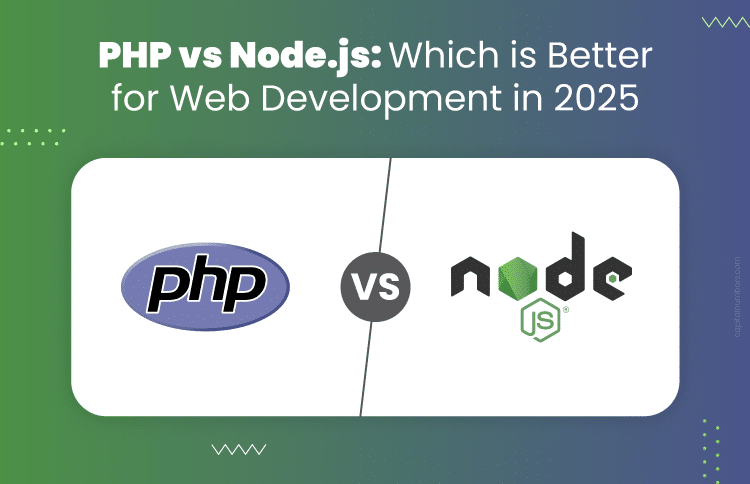Flutter vs. React Native: Choosing the Right Framework
Table of Contents
In today’s mobile-first world, picking the right framework is crucial. Two of the most popular frameworks for building cross-platform mobile apps are Flutter and React Native. The two offer the capability to develop for iOS and Android with a single codebase, but they each have their own strengths and weaknesses.
The purpose of this article is to provide you with a detailed comparison between Flutter and React Native to help you decide which framework is best suited for developing your next mobile application.
Overview of Flutter and React Native
Flutter: The Flutter open source UI toolkit from Google allows developers to create natively compiled applications for mobile, web, and desktop by utilizing a single code base. This program utilizes the Dart programming language, which is known for its speed and ease of use. A key feature of Flutter is its ability to create visually appealing applications with smooth animations by using its rich set of custom widgets.
React Native: React Native is an open-source framework developed by Facebook that allows developers to develop mobile apps using both JavaScript and React. By utilizing this platform, it is possible to develop apps for both iOS and Android platforms using a single codebase. Using React Native’s native components makes it possible to create apps that closely resemble native apps in terms of look and feel.
Performance
Flutter: Flutter is known for its high performance due to its compiled nature. Flutter apps are built directly into native ARM code, providing smooth animations and fast load times.
React Native: Performance is generally good, but since it uses a JavaScript bridge to interact with native modules, it may not be as fast as Flutter in certain scenarios. However, React Native’s performance is usually sufficient for most applications.
Development Experience
Flutter: Using Flutter’s “hot reload” feature, developers can view changes in real time without having to restart their application.This framework uses a widget-based architecture that provides extensive customization possibilities, ensuring that developers can create UIs across platforms that are unique and consistent. However, learning Dart can be a little bit of a challenge for developers who do not have any experience with the language.
React Native: React Native also features a “hot reload” capability, making it easy to experiment and iterate on the design. For developers familiar with JavaScript/TypeScript and React, the learning curve is minimal, allowing for a quick start. React Native’s mature ecosystem provides access to a wide range of third-party libraries, enhancing the development experience and speeding up the process.
Supercharge your mobile app development with our expert React Native developers. Hire now and accelerate your app’s success!
Community and Ecosystem
Flutter: Flutter boasts a thriving community with robust backing from Google. Though additional packages and plugins are being published, the ecosystem is still growing and not as matured as React Native’s. Developers will find that the official documentation is comprehensive and provides comprehensive guidance, which is a major plus.
React Native: The React Native ecosystem and community are well established. As a result, there are a wealth of resources, libraries, and tools available for the React Native developer. The maturity of the product means that many common issues have already been addressed, and developers are able to find solutions online easily. The large community of React Native ensures that help is always available, whether you need troubleshooting advice or best practices information.
UI/UX Design
Flutter: Flutter is great at building incredibly customizable, attractive user interfaces. Because of its widget-based architecture, which ensures platform-neutral design, users can have exact command over each and every pixel on the screen. One of Flutter’s best features is its ability to offer a native-like experience on both iOS and Android with a single codebase.
React Native: as React Native makes use of native components, the user interface of the app looks natural on both iOS and Android. Although this method assures a stronger conformity to platform-specific standards for design, it could be challenging to achieve pixel-perfect designs on both platforms. However, React Native is highly capable of delivering a quality user experience that feels native to the platform.
Learning Curve
Flutter: For developers who are new to Flutter, one of the biggest hurdles is learning Dart. Dart is not as popular as JavaScript, which could be a barrier for some developers although it is meant to be simple to learn. However, Flutter’s development process is simple and effective after the initial learning curve is overcome, because of its full documentation and vibrant community.
React Native: React Native is relatively easy to learn for developers who are already familiar with JavaScript or React. The framework’s concepts are closely aligned with those in web development, which makes it highly accessible. This familiarity not only minimizes the learning curve but also contributes to faster development times and smoother onboarding of new developers, making React Native an efficient choice for many development teams.
Integration with Native Features
Flutter: Flutter enables access to native features through platform channels, allowing communication between Dart code and native languages like Java or Swift. While this method offers powerful capabilities, it can be more complex than working with React Native. However, Flutter’s expanding plugin ecosystem often minimizes the need for custom native code for many common functionalities.
React Native: The simplest method to integrate native modules is using React Native. Developers can easily integrate native code written in Objective-C, Swift, or Java with their JavaScript code. React Native is a wonderful choice for apps that need deep integration with native APIs due to its flexibility.
Case Studies and Popular Apps
Flutter: There are several well-known apps that use Flutter, including Google Ads, Alibaba, and Hamilton Musical. It is evident from these examples that Flutter can handle complex user interfaces and provide a consistent user experience on a variety of platforms.
React Native: React Native was developed to create the popular apps Instagram, Facebook, and Pinterest. These applications indicate exactly how React Native can scale and keep up performance in user-heavy applications.
You May Also Read: How to Build a Mobile App That Drives Business Growth
Conclusion
Choosing between Flutter and React Native depends on your project’s needs, your team’s skills, and your long-term goals.
Flutter is great for projects that need highly customized UIs and top performance. It has strong support from Google and a growing community, making it a reliable choice.
React Native is ideal if you need to get to market quickly and can use your web development skills. It has a mature ecosystem, a large community, and lots of third-party tools. It also integrates well with native modules.
Both frameworks are solid options. Consider your project’s requirements to choose the one that best fits your needs.

















